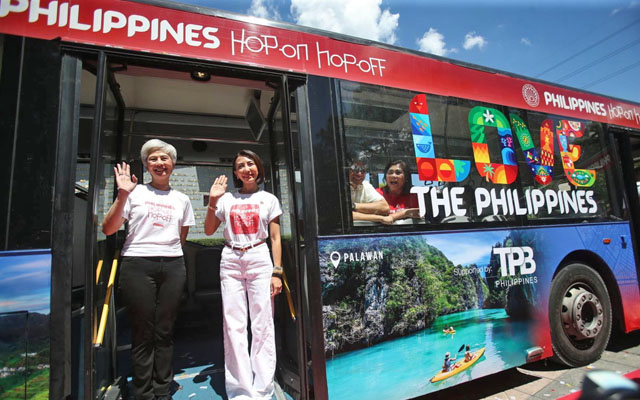Just How Transit Marketing Can Change Public Transport Spaces Into Dynamic Marketing Operatings Systems
Transit advertising holds considerable possibility to redefine public transportation areas into dynamic advertising platforms that inform and involve. As we discover the complex advantages and advancing strategies of transit advertising and marketing, it elevates the inquiry of exactly how this improvement might redefine our communications with both brands and the metropolitan atmosphere.
Benefits of Transit Marketing

In addition, transportation advertising is highly cost-efficient contrasted to standard media. It allows marketers to accomplish high perceptions at lower expenses, optimizing roi. The restricted audience of travelers offers an opportunity for brand names to communicate their messages to individuals who are often receptive throughout their travel times.
Additionally, the vibrant nature of transit marketing permits campaigns to be updated regularly, ensuring that messaging stays timely and appropriate. This flexibility can be important in reacting to market trends or promotional occasions, maintaining the brand name top-of-mind for consumers. Last but not least, the prevalent existence of transportation advertising and marketing contributes to brand name recall; duplicated exposure within acquainted travel contexts enhances brand awareness and promotes customer loyalty, eventually driving sales and enhancing brand name track record.
Kinds Of Transit Advertising And Marketing
Mass transit systems supply numerous layouts for advertising, each dealing with different advertising approaches and audience engagement methods. One prominent type is exterior bus and train wraps, which cover the whole lorry and develop a mobile signboard impact, enabling high exposure in metropolitan environments. These wraps can capture focus as they go across active roads, reaching a diverse target market.
One more popular format is indoor marketing, that includes posters, digital displays, and ads on transportation seats. These positionings engage guests throughout their journey, enhancing brand name messaging in a restricted space. Digital presents, specifically, provide the advantage of vibrant material, enabling marketers to update messages in real-time.
Terminal marketing is also substantial, featuring posters, banners, and interactive stands within transportation stations. These advertisements leverage foot website traffic and can target certain demographics based on area.
Last but not least, promotional collaborations with transportation authorities can lead to unique projects, such as themed transit experiences or occasions, enhancing the total interaction with travelers. Each sort of transportation marketing offers distinctive benefits, permitting brand names to tailor their technique to efficiently reach their target audience within the general public transportation ecological community.
Engaging Travelers Effectively
Travelers are progressively flooded with marketing messages throughout their daily trips, making it vital for brands to engage them in cutting-edge methods. To capture interest in this crowded area, marketers need to focus on creativity and importance. Utilizing captivating visuals and concise messaging can dramatically enhance the possibility of engagement.
Interactive aspects, such as QR codes or enhanced fact attributes, can additionally transform static ads into immersive experiences, promoting a much deeper link with the audience. Brands ought to concentrate on attending to travelers' passions and demands, tailoring messages to resonate with their lifestyle, whether through promotions for local companies or services developed to improve their travelling experience.
In addition, timing plays an essential function; purposefully positioning advertisements during peak commuting hours can maximize presence and impact. Involving travelers properly additionally involves leveraging social networks assimilation, permitting travelers to share their promos or experiences directly from transit systems, thereby amplifying brand name reach.
Fundamentally, effective interaction rests on understanding the traveler trip and creating compelling, interactive, and relevant advertising experiences that not just catch attention yet likewise drive action and commitment. By doing so, brands can change mass transit into a vibrant advertising system that resonates with its target market.

Measuring Marketing Impact
Just how can brands accurately examine the efficiency of their ad campaign in transit settings? Determining the influence of transit advertising Get More Information needs a multifaceted strategy that integrates quantitative and qualitative metrics. One common method is tracking interaction through mobile analytics, where brand names can evaluate foot website traffic patterns and app interactions in the past, during, and after projects.
Surveys can give beneficial insights right into brand recall and consumer sentiment, enabling brand names to evaluate exactly how well their messages reverberate with commuters. Furthermore, monitoring social networks involvement related to certain projects can reveal shifts in public understanding and brand name conversation.
Additionally, teaming up with transit agencies can improve dimension precision, as they often possess thorough demographic information on ridership trends. By integrating these methods, brands can establish a detailed understanding of their marketing efficiency, making certain that their projects not just get to however likewise affect their target market successfully.
Future Patterns en route Advertising And Marketing
A considerable shift is anticipated in transportation advertising look at this now and marketing as technical improvements and altering consumer actions improve the landscape. Transit Advertising Philippines. The combination of interactive media and electronic displays is expected to boost interaction, enabling brands to supply dynamic content that reverberates with varied audiences. As mass transit systems accept smart technology, marketers will leverage real-time information analytics to tailor messages based upon traveler demographics and behaviors
In addition, increased reality (AR) is positioned to reinvent the way travelers engage with advertisements. By providing immersive experiences, AR can change a mundane journey right into an engaging story that captures attention and fosters brand name commitment. This advancement will likely motivate marketers to create more experiential projects that drive customer interaction.
Sustainability is an additional important trend affecting transportation marketing. As ecological consciousness expands, brand names will progressively look for to align with green practices, making use of lasting materials and advertising environment-friendly efforts within their projects.
Conclusion
To conclude, transportation advertising uses significant advantages by boosting brand exposure and involving a restricted audience. Through numerous formats, such as exterior covers and electronic screens, it transforms public transport right into a vibrant marketing system. Effective engagement methods and durable dimension methods even more magnify its influence. As trends progress, the potential for ingenious interactions between brands and travelers is poised to grow, making certain that transit marketing continues to be a crucial part of contemporary marketing approaches.
Transportation advertising and marketing holds considerable possibility to redefine public transport areas into dynamic advertising platforms that notify and engage. The pervasive visibility of transportation advertising and marketing adds to brand recall; repeated exposure within acquainted travel contexts reinforces brand name recognition and cultivates customer loyalty, ultimately driving sales and improving brand track record.
Just how can brand names precisely evaluate the effectiveness of their advertising and marketing projects in transit settings?In final thought, transit advertising supplies considerable advantages by enhancing brand presence and involving a captive target market. Transit Advertising Philippines. As trends advance, the potential for cutting-edge interactions in navigate to this website between brand names and commuters is positioned to expand, ensuring that transportation advertising and marketing stays a vital part of contemporary advertising approaches